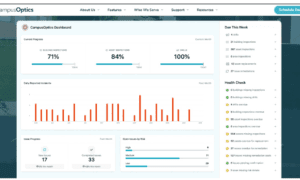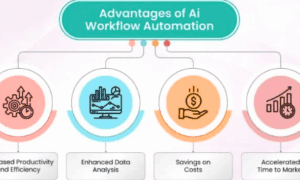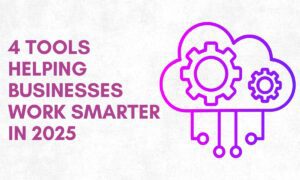Introduction: Why Modern Meetings Demand a New Approach
Board meetings have always been the heartbeat of organizational decision-making. But in today’s digital-first environment, the way we plan, conduct, and follow up on meetings has changed dramatically. Remote participation, tighter compliance demands, and the need for quick decisions make efficiency and clarity more important than ever.
This is where Board Meeting Management comes into play. Done right, it transforms meetings from time-consuming obligations into streamlined, strategic sessions. By embracing best practices and digital tools, boards can ensure every meeting delivers value.
The Importance of Structured Board Meeting Management
Good governance thrives on structure. Without it, meetings often drift into unproductive conversations. Clear Board Meeting Management ensures agendas are defined, responsibilities are assigned, and goals are aligned.
A well-managed board meeting gives every participant a chance to contribute meaningfully. It also helps organizations move forward with clarity. In the digital age, where time is limited and distractions are endless, structure provides the discipline boards need to stay focused.
Building a Foundation for Success
The foundation of effective management starts with preparation. When members have access to documents, reports, and previous meeting notes well in advance, discussions are sharper. This preparation sets the stage for meaningful decision-making.
Leveraging Digital Tools for Seamless Collaboration
Technology has become the backbone of Board Meeting Management. Platforms that centralize agendas, documents, and communication allow boards to work smarter, not harder. Instead of digging through emails or juggling attachments, members find everything they need in one secure space.
Collaboration tools also enable real-time feedback. Board members can annotate reports, comment on proposals, and share insights before the meeting begins. This keeps discussions productive and ensures valuable time isn’t wasted on administrative back-and-forth.
The Role of Virtual Meetings
Virtual participation is no longer an exception—it’s the norm. Video conferencing tools integrated with board management platforms allow members to join from anywhere. This inclusivity strengthens decision-making and ensures the board benefits from diverse perspectives.
Creating Effective Agendas and Sticking to Them
An agenda is the roadmap of any meeting. Without it, boards risk losing focus. Effective Board Meeting Management relies on agendas that are clear, prioritized, and shared in advance.
The best agendas outline not just topics but also time allocations. This helps boards avoid spending too much time on minor issues while leaving critical matters rushed. Digital platforms make it easy to distribute and update agendas so that all members are aligned.
Staying on Track During Meetings
Sticking to the agenda requires discipline. A designated chairperson or facilitator plays a key role here. By guiding discussions and redirecting when necessary, they ensure meetings remain productive.
Strengthening Security and Confidentiality
Boards handle sensitive information daily. From financial performance to strategic plans, data must remain secure. Modern Board Meeting Management emphasizes confidentiality by relying on secure platforms instead of unsecured emails or printed documents.
Features like encrypted access, role-based permissions, and digital audit trails safeguard valuable information. This not only protects the organization from risks but also ensures compliance with industry regulations.
Building Trust Through Security
When members know that their data is safe, they engage more openly. Trust in the meeting process allows boards to focus on strategy instead of worrying about breaches or leaks. Security becomes a silent but powerful driver of effective governance.
Documenting Decisions and Tracking Action Items
A meeting’s value lies not only in the discussions but in the outcomes. Effective Board Meeting Management ensures that every decision is documented and every action item is assigned. Relying on memory or scattered notes is no longer sustainable.
Modern tools automate minute-taking, track tasks, and assign responsibilities. This makes it easy for members to follow up on commitments and measure progress. Action tracking keeps boards accountable long after the meeting ends.
From Decisions to Results
When boards track follow-through, governance improves. Decisions become actionable strategies, and members gain confidence that their contributions are driving real results. This accountability strengthens the board’s overall effectiveness.
Encouraging Continuous Improvement
Good management isn’t static. Boards that want to thrive must evaluate their meeting processes regularly. Surveys, feedback sessions, and performance reviews can uncover areas for improvement.
Board Meeting Management isn’t just about efficiency—it’s about evolving with the times. By adapting agendas, adopting new technologies, and refining practices, boards stay relevant in a fast-changing world.
Looking Ahead in the Digital Age
As governance continues to evolve, boards that embrace digital solutions will lead with agility. Continuous improvement ensures that meetings remain not only effective but also aligned with organizational goals.
Conclusion: Leading with Clarity and Confidence
Effective Board Meeting Management is more than logistics—it’s a leadership practice. By structuring agendas, leveraging technology, prioritizing security, and tracking outcomes, boards ensure every meeting adds value.
In today’s digital age, boards can no longer afford inefficiency. With the right tools and best practices, they can govern with clarity, agility, and confidence. And that’s the foundation of strong, future-ready organizations.



































